Cysteamine
Synonym(s):MEA;2-Aminoethanethiol;2-Mercaptoethylamine;β-MEA;β-Mercaptoethylamine
- CAS NO.:60-23-1
- Empirical Formula: C2H7NS
- Molecular Weight: 77.15
- MDL number: MFCD00008196
- EINECS: 200-463-0
- SAFETY DATA SHEET (SDS)
- Update Date: 2024-11-19 23:02:33

What is Cysteamine?
Absorption
Orally administered cysteamine is absorbed in the gastrointestinal tract and reaches its maximum plasma concentration in about 1.4 hours, with some variation according to the type of formulation (delayed versus immediate-release). One pharmacokinetic study of adults with Cystic Fibrosis revealed a Cmax of 2.86 mg/L.The maximum plasma concentration after administration of cysteamine eye drops is unknown, however, it is likely to be considerably lower than oral administration.
According to prescribing information, the AUC 0-12 h for the delayed-release oral tablets is 99.26 ± 44.2 μmol*h/L with a Cmax of 27.70 ± 14.99 μmol/L.
The AUC 0-12 for the immediate-release tablets is 192.00 ± 75.62 μmol*h/L with a Cmax of 37.72 ± 12.10 μmol/L.
Toxicity
Two cases of human overdoses with cysteamine are recorded in the literature, according to prescribing information. In one case, vomiting was immediate after the administration of cysteamine, and the patient did not experience other symptoms. A 200 to 250 mg/kg dose was accidentally ingested by a healthy 13-month-old child. Vomiting and dehydration followed. A full recovery was made after hospitalization and the replenishment of fluids.
There is no known antidote for an overdose with cysteamine. In the case of an overdose, provide supportive treatment, especially to the cardiovascular and respiratory systems. Hemodialysis may be useful in some cases due to the fact that cysteamine has poor plasma protein binding.
Description
2-AMINOETHANETHIOL is the chemical compound with the formula HSCH2CH2NH2. It is the simplest stable aminothiol and a degradation product of the amino acid cysteine. It is often used as the hydrochloride salt, HSCH2CH2NH3Cl. The comparatively high melting point of cysteamine (95-97 °C), indicates that exists in a salt form.
Chemical properties
2-AMINOETHANETHIOL is white powder
The Uses of Cysteamine
2-Aminoethanethiol is used in preparation method of fluorescence quenching array sensor based on cadmium telluride quantum dots and application in qualitative discrimination and quantitative analysis of organic acids.
The Uses of Cysteamine
antihyperlipidemic, HMGCoA reductase inhibitor
The Uses of Cysteamine
Scavenges benzyl and allyl halides and ketones.
The Uses of Cysteamine
Cysteamine is suitable for use:
- in the preparation of cysteamine modified gold nanoparticles (AuNP)
- in the fabrication of SU-8 microrods, where in, the amine group of cysteamine reacts with the unreacted epoxide rings present on the surface of the particles, thereby opening it and forming a covalent bond
- to enhance in vitro development of porcine oocytes matured and fertilized in vitro
- in a study to demonstrate the depletion effect of cysteamine on cystinotic leucocyte granular fractions of cystine by disulphide interchange
- as a radioprotector
- to administer subcutaneously in rats to study its blocking effect on somatostatin secretion without modifying the pancreatic insulin or glucagon content
- as a scavenger in electrophoretic gels (acetic acid/urea gels)
Indications
The bitartrate salt of cysteamine is used for the oral treatment of nephropathic cystinosis and cystinuria in adults and children ≥6 years old. The hydrochloride salt, used in eye drop preparations, is indicated for the treatment of corneal cystine crystal accumulation in patients with cystinosis.
Background
Cystinosis is a rare disease caused by mutations in the CTNS gene that encodes for cystinosin, a protein responsible for transporting cystine out of the cell lysosome. A defect in cystinosin function is followed by cystine accumulation throughout the body, especially the eyes and kidneys.
Several preparations of cysteamine exist for the treatment of cystinosis manifestations, some in capsule form, and others in ophthalmic solution form. In particular, cystine deposits on the eye can cause significant discomfort throughout the day and require frequent treatment with eye drops, typically every waking hour.
On August 25th 2020, the first ophthalmic solution for cystinosis requiring only 4 daily treatments was granted FDA approval. Cysteamine eye drops are a practical and effective option for those affected by ocular cystinosis. Marketed by Recordati Rare Diseases Inc., CYSTADROPS? reduce the burden of multiple frequent medications normally administered to those with cystinosis.
Definition
2-AMINOETHANETHIOL is an amine that consists of an ethane skeleton substituted with a thiol group at C-1 and an amino group at C-2.
Preparation
Cysteamine can also be prepared by the reaction of ethylenimine with hydrogen sulfide.
(NHCH2CH2) + H2S → HSCH2CH2NH2.
Reactions
2-AMINOETHANETHIOL is used as the hydrochloride salt, as it readily oxidizes to the corresponding disulfide, in the presence of air. The amine portion of the molecule serves as a catalyst for this reaction.
4 HSCH2CH2NH2 + O2 → 2 NH2CH2CH2SSCH2CH2NH2 + 2 H2O.
Pharmaceutical Applications
Under the trade name Cystagon, cysteamine is used in the treatment of disorders of cystine excretion. Cysteamine cleaves the disulfide bond with cystine to produce molecules that can escape the metabolic defect in cystinosis and cystinuria.
It is also used for treatment of radiation sickness.
Cysteamine is used in the body to form the essential biochemical coenzyme A by combining with pantothenate and adenosine triphosphate.
In 2008, Raptor Pharmaceuticals started phase II clinical trials testing a delayed release (DR) preparation of cysteamine bitartrate for Huntington's disease. DR Cysteamine is also being investigated as a treatment for cystinosis, Batten disease, and non-alcoholic steatohepatitis.
Biochem/physiol Actions
Cysteamine (β-mercaptoethylamine) depletes cystine from patient′s cells and there by regulates renal glomerular function and increases growth in them. Therefore, cysteamine is considered to be a potential therapeutic for nephropathic cystinosis.
Pharmacokinetics
Cystine accumulation is the cause of organ damage in cystinosis. Cysteamine prevents the accumulation of cystine crystals in the body and is specifically prescribed to prevent kidney and eye damage. Cysteamine converts cystine into a form that may easily exit cells, preventing harmful accumulation.
Safety Profile
Poison by intravenous, subcutaneous, and intraperitoneal routesModerately toxic by ingestion. Experimental reproductive effects. Mutation data reported. When heated to decomposition it emits very toxic fumes of SO, and NOx,.
Metabolism
There is limited information in the literature regarding the metabolism of cysteamine. This drug undergoes significant first-pass metabolism.
Purification Methods
It is soluble in H2O giving an alkaline reaction, and it has a disagreeable odour. A likely impurity is the disulfide cystamine which is not soluble in alkaline solution. Under a N2 atmosphere dissolve it in EtOH, evaporate to dryness and wash the white residue with dry pet ether, then sublime it at 0.1mm and store it under N2 at 0-10o in the dark. Its HgCl2 (2:3) complex has m 181-182o (from H2O), and its picrate has m 125-126o. [Mills & Bogert J Am Chem Soc 57 2328 1935, 62 1173 1940, Baddiley & Thain J Chem Soc 800 1952, Shirley Preparation of Organic Intermediates (J. Wiley) Vol 3 189 1951, Barkowski & Hedberg J Am Chem Soc 109 6989 1987, Beilstein 4 IV 1570.]
Properties of Cysteamine
| Melting point: | 95°C |
| Boiling point: | 130 °C |
| Density | 0.934 (estimate) |
| refractive index | 1.5300 (estimate) |
| storage temp. | 2-8°C |
| Water Solubility | Soluble in water |
| form | Powder |
| pka | 8.35(at 25℃) |
| color | White to slightly yellow |
| Merck | 14,2779 |
| BRN | 635649 |
| Stability: | Stable, but may be air-sensitive. Incompatible with strong oxidizing agents. |
| CAS DataBase Reference | 60-23-1(CAS DataBase Reference) |
| EPA Substance Registry System | Cysteamine (60-23-1) |
Safety information for Cysteamine
| Signal word | Warning |
| Pictogram(s) |
 Exclamation Mark Irritant GHS07 |
| GHS Hazard Statements |
H302:Acute toxicity,oral H315:Skin corrosion/irritation H319:Serious eye damage/eye irritation H335:Specific target organ toxicity, single exposure;Respiratory tract irritation |
| Precautionary Statement Codes |
P261:Avoid breathing dust/fume/gas/mist/vapours/spray. P264:Wash hands thoroughly after handling. P264:Wash skin thouroughly after handling. P270:Do not eat, drink or smoke when using this product. P301+P312:IF SWALLOWED: call a POISON CENTER or doctor/physician IF you feel unwell. P302+P352:IF ON SKIN: wash with plenty of soap and water. P305+P351+P338:IF IN EYES: Rinse cautiously with water for several minutes. Remove contact lenses, if present and easy to do. Continuerinsing. |
Computed Descriptors for Cysteamine
New Products
4-AMINO-TETRAHYDRO-PYRAN-4-CARBOXYLIC ACID HCL 4-(Dimethylamino)tetrahydro-2H-pyran-4-carbonitrile 4-AMINO-TETRAHYDRO-PYRAN-4-CARBOXYLIC ACID 4-Aminotetrahydropyran-4-carbonitrile Hydrochloride (R)-3-Aminobutanenitrile Hydrochloride 5-Bromo-2-nitropyridine Nimesulide BP Aceclofenac IP/BP/EP Diclofenac Sodium IP/BP/EP/USP Mefenamic Acid IP/BP/EP/USP Ornidazole IP Diclofenac Potassium 3-Bromopyrazole (3aR,4R,5R,6aS)-hexahydro-5-Triethyl silyloxy-4-((E)-3-oxo-5-phenylpent-1- enyl)cyclopenta[b]furan-2-one. 1-Chlorocarbonyl-4-piperidinopiperidine 1-Bromo-4-phenyl-2-Butanone 4-Amino-2-fluoro-N-methylbenzamide 1,1'-Carbonyldiimidazole SODIUM AAS SOLUTION ZINC AAS SOLUTION BUFFER SOLUTION PH 10.0(BORATE) GOOCH CRUCIBLE SINTERED AQUANIL 5 BERYLLIUM AAS SOLUTIONRelated products of tetrahydrofuran
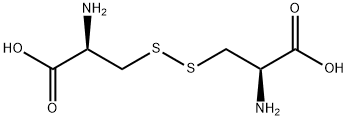
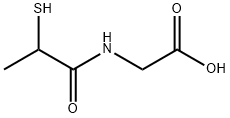

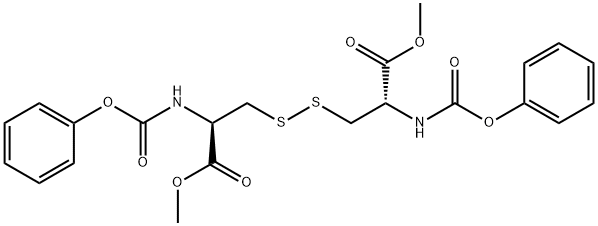
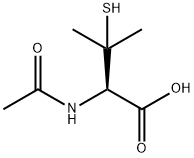
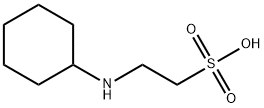
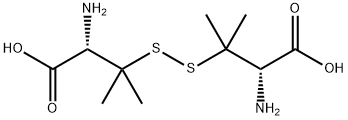
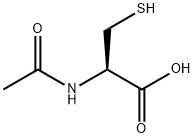
You may like
-
 60-23-1 2-AMINOETHANETHIOL 98%View Details
60-23-1 2-AMINOETHANETHIOL 98%View Details
60-23-1 -
 2-Aminoethanethiol CAS 60-23-1View Details
2-Aminoethanethiol CAS 60-23-1View Details
60-23-1 -
 2-Mercaptoethylamine, polymer-bound CASView Details
2-Mercaptoethylamine, polymer-bound CASView Details -
 Cysteamine CAS 60-23-1View Details
Cysteamine CAS 60-23-1View Details
60-23-1 -
 Cysteamine CAS 60-23-1View Details
Cysteamine CAS 60-23-1View Details
60-23-1 -
![Dimethyl [2-oxo-3-[3-(trifluoromethyl)phenoxy]propyl]phosphonate 99%](https://img.chemicalbook.in//Content/image/CP5.jpg) Dimethyl [2-oxo-3-[3-(trifluoromethyl)phenoxy]propyl]phosphonate 99%View Details
Dimethyl [2-oxo-3-[3-(trifluoromethyl)phenoxy]propyl]phosphonate 99%View Details
54094-19-8 -
 85-81-4 99%View Details
85-81-4 99%View Details
85-81-4 -
![208111-98-2 (3aR,4R,5R,6aS)-5-(Benzoyloxy)hexahydro-4-[(1E)-3-oxo-4-[3-(trifluoromethyl)phenoxy]-1-buten- 1-yl]-2H-cyclopenta[b]furan-2-one 99%](https://img.chemicalbook.in//Content/image/CP5.jpg) 208111-98-2 (3aR,4R,5R,6aS)-5-(Benzoyloxy)hexahydro-4-[(1E)-3-oxo-4-[3-(trifluoromethyl)phenoxy]-1-buten- 1-yl]-2H-cyclopenta[b]furan-2-one 99%View Details
208111-98-2 (3aR,4R,5R,6aS)-5-(Benzoyloxy)hexahydro-4-[(1E)-3-oxo-4-[3-(trifluoromethyl)phenoxy]-1-buten- 1-yl]-2H-cyclopenta[b]furan-2-one 99%View Details
208111-98-2